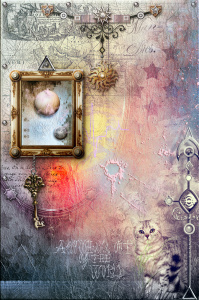Cat Rambo's Blog, page 48
June 17, 2015
Submerging, And Other Random Thoughts about Novelspinning
Found in a Seattle alley. They smelled like grandmothers and summer.
One of the questions I’ve been asked several times and never known how to answer before is “How is writing a novel different than writing a short story?” The smart-ass answer is, of course, a novel is longer, but it’s more than that, more a question of the complexity that a greater length affords you, an ability to move in four dimensions rather than just three.A short story is smaller, flatter, closer to two-dimensional, while a novel has at least four and probably much more than that. Things interconnect in a short story, but in a novel those interconnections become even more important, indeed are their own kind of building block. In a novel, things reflect, are doubled, made more complicated, imbued with meaning. So what’s the difference beyond that? For me, it’s what’s required in the writing, in getting enough of the book in my head to be able to figure out where it’s going next.
How does one achieve that? The answer that’s emerged for me is submersion. There needs to be — at least for me — a period where I’m focused on the writing to the exclusion of anything and everything else. To go to sleep with my words echoing in my head, to wake with dreams lingering in which pieces of the story have been predicted or deciphered. To not be watching television or playing videogames, which fills up my head with pop culture crap (I do not decry it in its place, simply claim that for a writer, too much can be detrimental.)
To work at novel length — at any length, really, though — is a willingness to let your unconscious wander and then capitalize in the rewrite on the wonderful things that process has revealed. You can’t hold a novel in your head the way you can contain a story, seeing it as a complete entity. Instead you exist within it, seeing outward, creating a hollow space in which the reader can live while experiencing the funhouse ride you have constructed.
I start with a roadmap that tells me the basic arc, but every few chapters I have to recalculate and check that map, and make sure no necessary sidetrips have presented themselves (or need to be dropped from the itinerary). I know by now, having completed five of these things, that I can reach the end. I just don’t know exactly how much gas it’ll take or what the terrain will present me with. That’s half the joy and most of the terror of this enterprise.
I don’t want to discount writers with a more straightforward plotting process — mileage will always, inevitably, vary and anyone who claims to have found the One True Way for anyone other than themself is full of hooey. Here’s a truth: all that matters is that you write. That you produce words of diction rather than words about the art of fiction writing or the state of the world or the publishing industry or any of the ways in which the world has wronged you (a fascinating topic to you, but few others). This is not to say that critique and revision are not important as well, but simply that for either to take place, the act of creation must have preceded it.
I’m counting down the days till July because I’m taking a month and a half for submerging myself, heading off to housesit for a friend in another state. It’s what both my waking and unconscious mind are telling me to do in order to finish up this book and get a running start on the next, Exiles of Tabat. To dive deep into the roots of the story and blunder around, colliding with those hidden pillars, overgrown with metaphor and symbology, so semiotically-shagged that you must reach out for them with something like a special bat-sense, akin to sonar, because otherwise you’re just a blind man, holding onto an elephant’s tail and gravely expounding on how like a snake an elephant truly is.
Those pillars inform everything because they hold it all up. A story is just a story, a spaceship just a spaceship… but that’s not true at all, is it? In a novel, a spaceship’s cargo hold is packed tight with meaning: exploration, escape, the forces of technology, even fripperies like references to other fictional spaceships or science.
Things in books are more than just things, because even when we’re reading “just for entertainment,” there’s a level on which they show us what is and isn’t okay for humans to do. Everything is political in that it works to normalize (or mark as abnormal) what’s presented in it. A book with a protagonist preaching libertarian values or fondling her gun is just as political as any other viewpoint and to pretend such stories are not is disingenuous or ignorant at best and outright dishonest at its worst.
But I digress, because I don’t want to talk about opinions of art, but rather what I can say about its creation. I’ll have wireless, so I’ll be teaching some classes, and there’s a few other things to do, but mainly I’m just going to write and write and see what I can get done. The book for sure, and a handful of stories that I’ve promised people, and at least an outline for Exiles. I am extremely lucky to have a spouse who doesn’t mind my heading off to hole up, as well as the economic circumstances to do this, and I am going to make the most of it, particularly in the post-Nebulas lull, because I’m itching to get the second book out there and see what people think, because it’s a weird structure, and man, the people who didn’t like the cliffhanger in the last are not going to be happy with this one.
Life’s been contentious lately, at least in the overall climate. If you want to feel happier, go do something nice for someone else. Give someone a kind word or a smile. And wish me luck, because today’s got a series of downers in it – but they are all quite survivable and July is coming soon.
June 14, 2015
Catching Up, Plus Nebulas Report and Sundry Advice for New Nebula-Goers
At the Nebula banquet, with Nick Offerman. Photo by Bud Sparhawk.
Okay, holy cow, the Nebulas were a blast but also a giddy whirl. Here’s some highlights. (Sundry advice piece #1: It’s good to do these, not just because it makes you remember some of the things you should be following through on, but because it lets you acknowledge some folks and maybe build some ties.)Starting the Nebula Weekend Off, or Friday Begins on Wednesday
Wednesday I flew in and lucked out: Kate Baker, SFWA’s awesome Operations Director, and I arrived around the same time, so we shared a taxi in. That was an experience in and of itself — the driver driving on the shoulder of the road, more than once, while Tagore songs blasted us and we shouted conversation over the roar of the wind through the window I couldn’t roll up. We arrived at the Palmer House unscathed.
Thursday I spent the day in the SFWA board meeting. We have board meetings face to face twice a year as well as the ongoing session on the discussion boards and assorted video calls. The board meetings are a nice chance to talk out stuff quickly, so we covered a wide range of things. I have a certain impatience with meetings engrained from years in academia and the corporate world, but Kate Baker had arranged to have enough coffee and food there to sustain us, and there are definitely worse people to be stuck in a room all day with. 
June 3, 2015
Guest Post from Halsted M. Bernard: Critiques, Counts, and Quests: Motivational Tools for Writers
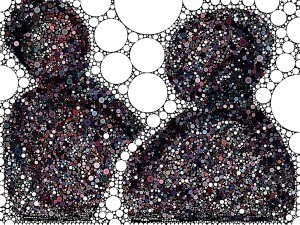 When I first became aware of BIC-HOK a few years ago, it enthralled me. I love a good acronym, and doubly so one that promises to whisper the secret to being a writer right into my eager ear.
When I first became aware of BIC-HOK a few years ago, it enthralled me. I love a good acronym, and doubly so one that promises to whisper the secret to being a writer right into my eager ear.
Butt in chair, hands on keyboard became more than an acronym for me. It became a mantra. Show up, and the rest will take care of itself. My butt was in the chair, and my hands were on the keyboard. And I was writing, cranking out crappy first drafts, and feeling less like a writer with every one.
Motivation, as it happens, is beautifully and frustratingly subjective. Some of us are motivated by the simplicity of showing up every day. Some of us need a little external nudge from time to time. If you are in the latter group, I have some secrets to whisper to you.
Although writing is generally a solo endeavour, the power of a good writing group is not to be underestimated. Like-minded, similarly-driven individuals can help you hold yourself accountable for all those stories you say you’re going to write someday. And once you’ve written the stories, a good writing group can provide you with the constructive criticism that you will need to improve them. Groups that meet regularly and stick to a specific critique format are particularly useful because they provide structure for those of us who need that sort of external impetus to produce workable drafts. I found my first writing group on Craigslist, but if your time is limited or your locale is remote, you might prefer to join a virtual group like critters.org instead.
If you are intrigued by the power of group accountability, I have a magic spreadsheet to show you. No, really! It’s called the Magic Spreadsheet and it is an ingenious invention. Log your daily word count in the spreadsheet and it automatically gives you points for making your quota, going over your quota, and maintaining a writing streak. When your points add up, your level increases and so does your word count quota, so it never gets too easy. And if you relish a bit of competition, you can check out the leaderboard sheet to see how your counts stack up with the other writers who are participating. If you think this tool might help to motivate you, you can find more information in the Google+ community or the Facebook group.
Wrangling spreadsheets, even magic ones, might not sound all that thrilling to you. If you’d rather picture yourself slaying the dragons of procrastination with a magical morning-star, I’d encourage you to check out HabitRPG. HabitRPG is an open-source habit-building app that is structured like a role-playing game. It enforces good habits by awarding you XP and gold, and can be used to manage your to-do list as well. There are many groups, or guilds, in HabitRPG that are devoted to writing communities. These guilds create challenges for their members (like meeting a daily word quota) and also provide space to chat in real time with other writers. If you prefer to quest solo, you can use HabitRPG as your own, lone fantasy metaphor for all those real-life bits and bobs you have been procrastinating, including but not limited to your writing.
Remember, tools to spark writerly motivation can be helpful, but anything that detracts from actual BIC-HOK should be considered cat hoovering: any excuse to avoid writing, even vacuuming the cat.
BIO: Halsted M. Bernard obsessively archives the present, but cannot stop thinking about the world after this one. She lives in Edinburgh with her husband, two cats, a few gadgets, several fountain pens, and many books. Find her online at http://halstedmbernard.com.
Being Epic
I’m getting ready to head off to the Nebulas in about an hour. Ten years ago at this time, I was getting ready to go off to Clarion West for six weeks. I’d quit my job at Microsoft and my husband had agreed to shoulder the mortgage solo for a while so I could follow my dream.
Now it’s a decade later. A lot of stuff has happened. I’ve had some stories published. I got to read in New York at the KGB bar with Chip Delany. I got nominated for awards a few times. I edited some cool stuff. I ran for Vice President of SFWA and won, and now I’m coming up on being President. And I published a novel.
And now that novel is here in a big wonderful bundle of fantasy, curated by Kevin J. Anderson. Here’s a picture of all that epic goodness:
StoryBundle lets you adjust your own price to get a whole bunch of epic and excellent titles. A minimum bid of $5 gets you the basic set of six books: The Magic Touch, by Jody Lynn Nye; Gamearth, by Kevin J. Anderson, The Crown and the Dragon, by John Payne, One Horn to Rule Them All, edited by Lisa Mangum, Invisible Moon, by James A. Owen, and Beasts of Tabat. Make that $15 and it includes A Stranger to Command, by Sherwood Smith, Hard Times in Dragon City, by Matt Forbeck, The Alchemist, by Paolo Baciagalupi, The Executioness, by Tobias Buckell, The Ghosts of the Conquered, by Matthew Caine, and Glamour of the God-Touched, by Ron Collins. There’s also a bonus story by Kevin J. Anderson and Neil Peart from Rush, “The Bookseller’s tale.”
Want it? I’ve got five bundles to give away and I’m trying to a Rafflecopter giveaway. Spread the word and you can win!
June 1, 2015
The SF That Was: Isaac Asimov Introduces Anne McCaffrey
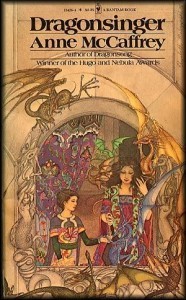 One of the things I’ve been trying to do in recent years is look more at the history of the field. In the thrift store, I love finding F&SF anthologies from the 60s and 70s, in part because it’s interesting to see which names kept on going, which faded away. Often the most riveting story in a collection is from a writer whose name I’ll only see that once. In reading anthologies, I find that often one of the most revelatory parts is the introduction, less for anything said about the stories than for clues to the publishing climate at the time.
One of the things I’ve been trying to do in recent years is look more at the history of the field. In the thrift store, I love finding F&SF anthologies from the 60s and 70s, in part because it’s interesting to see which names kept on going, which faded away. Often the most riveting story in a collection is from a writer whose name I’ll only see that once. In reading anthologies, I find that often one of the most revelatory parts is the introduction, less for anything said about the stories than for clues to the publishing climate at the time.
Recently in the thrift shop, I picked up a couple of paperbacks: two volumes worth of early Hugo winners, edited by Isaac Asimov. Of course I bought them. How could I not, in light of recent controversies? They’ve been an interesting read – particularly when I’m reading the first Nebula volume at the same time — and sometimes illuminating. If you’d like to read the book I pulled these from, it is More Stories From the Hugo Winners Vol II, published in 1971.
I certainly have realized that despite my admiration for Asimov’s work, the good doctor and I would probably have not gotten along particularly well — at least from my point of view. Every intro to a story seems much more about Asimov than either story or writer, in an egocentric way that seems a little charming but I’m betting was pretty grating to be around at times. (I by no means claim that Asimov is the only SF writer to exhibit this trait.) But Mr. Asimov is not here to defend himself and was very much a product of his time, so I’ll leave it at that.
Because I found it striking, this is taken from his introduction to Anne McCaffrey’s “Weyr Search”. It’s a glimpse into the social mores of that time (the early 70s) that’s interesting. I have refrained from adding any inline commentary. As you read, you may admire my restraint in that.
Anne McCaffrey is a woman. (Yes, she is; you notice it instantly.) What makes this remarkable is that she’s a woman in a man’s world and it doesn’t bother her a bit.
Science fiction is far less a man’s world than it used to be as far as the readers are concerned. Walk into any convention these days and the number of shrill young girls fluttering before you (if you are Harlan Ellison) or backing cautiously away (if you are me) is either fascinating or frightening, depending on your point of view. (I am the fascinated type.)
The writers, however, are still masculine by a heavy majority. What’s more, they are a particularly sticky type of male, used to dealing with males, and a little perturbed at having to accept a woman on an equal basis.
It’s not so surprising. Science is a heavily masculine activity (in our society, anyway); so science fiction writing is, or should be. Isn’t that the way it goes?
And then in comes Anne McCaffrey, with snow-white hair and a young face (the hair-color is premature) and Junoesque measurements and utter self-confidence, talking down mere males whenever necessary.
I get along simply marvelously well with Annie. Not only am I a “Women’s Lib” from long before there was one, but I have the most disarming way of goggling at Junoesque measurements which convinces any woman possessing them that I have good taste.
Coupled with all the accounts of Isaac Asimov groping women, the part about the girls backing cautiously away while lusting after Ellison, who was a hottie (IMO) or at least a lot better looking than Asimov, makes perfect sense. Of course, it’s impossible not to mention a much later incident that underscores some of the irony so rife in all of this, although my understanding is that he regrets that episode and is unlikely to repeat it.
Here I typed out and then deleted a protracted rant about the hypnotic powers of breasts. I’ll save that for some other time.
Okay, so back to that intro. It’s interesting because Asimov positions himself very much as one of the good guys, “a ‘Women’s Lib’ from long before there was one” because it is immediately followed up with “plus women really like it when I compliment them on their breasts.” OMG there are the hypnotic powers again.
Well, maybe by the end of the piece, he’s moved away from breasts. Let’s see:
In August 1970 Annie and I were co-guests of honor at a science fiction conference in Toronto. That meant one certain thing. We had another of our perennial songfest competitions. We sing at each other very loudly, and finally we work ourselves up to a climax*, which is always “When Irish Eyes Are Smiling.”
We each have our pride, of course, not so much in any skill at singing, but in loudness and range. And while everyone in the audience gets far out to non-wincing distance, we get louder and higher. (I happen to have a resonant baritone, but Annie perversely refuses to consider me anything but a tenor. “Never trust a tenor,” she says darkly.)
It always ends the same way. At the final note, she takes a deep breath and holds. I do, too, but before the minute is up, I fade, choke, and halt, while that final note of Annie’s keeps right on going — loud, shrill, and piercing, for an additional fifteen seconds at least.
And then everyone applauds and when I say, “It’s not fair. She has spare lungs,” and point at her aforementioned Junoesque proportions, no one seems to care.
There’s another line about how she’s in Ireland and he misses her, but I’m gonna leave it at that and let’s look at two things.
A. not so much in any skill at singing.
Okay, that’s just so far off the mark that it’s weird. This is from Anne McCaffrey’s biography:
She studied voice for nine years and, during that time, became intensely interested in the stage direction of opera and operetta, ending that phase of her experience with the direction of the American premiere of Carl Orff’s LUDUS DE NATO INFANTE MIRIFICUS in which she also played a witch.
Given that, when I see words like “shrill” and “piercing” applied to that final note, I’ve got some doubts about whether people are scrambling out to “non-wincing distance” on her account. And I find it interesting how all of that experience doesn’t get mentioned, because I’m pretty sure he would have been aware of it.
Was this perhaps an in-joke (always a possibility in this field), Asimov fondly tweaking “Annie”? Even allowing for that, from my vantage position, it seems like not just slightly hostile humor, but humor aimed at diminishing her achievements, and that sets off certain alarm bells for me.
B. And then everyone applauds and when I say, “It’s not fair. She has spare lungs,” and point at her aforementioned Junoesque proportions, no one seems to care.
I must admit, I am sure that this moment happened in real life at least once. Probably more. And I read that “no one seems to care” as an appalled silence in which the rest of the room, including McCaffrey, thought “FFS, Isaac,” exchanged glances, and wordlessly established that they would all ignore the gaucherie of a professional author being such a bad loser that he’s blaming her win on the fact she has “Junoesque proportions” aka a hefty set of mammary glands. Remember, it’s the early 70s, and “women’s Lib” is enough of a catch-phrase for it to fall pretty easily off Asimov’s tongue.
And you know, we can argue that the women of the time didn’t mind it, or didn’t object at the time, but a few things are clear. One, the boob-grabbing, whether verbal or literal, has been going on a while and two, here we’re not getting much talk about the story or the lady’s actual accomplishments, other than being well-endowed. And that, I think, is at the heart of some of this — that women writers often have this “hey, hey, my eyes are up HERE” thing that goes on and while it’s annoying, when it gets to the point of obscuring one’s writing, it’s downright alarming.
This may be why some of us, when reading pieces about the history of the field, object to descriptions of the female writers and editors that focus on their physical appearance and really don’t tell us what we want to know: what were they like? What writers did they like and mentor? How did they help shape the field? What were the friendships and rivalries like? I’d rather know that than cup size; I am aware mileage on such matters varies.
I’ve hit longer than usual length here, so I will leave the introductions to Samuel R. Delany, Robert Silverberg, and Harlan Ellison (who has two stories in the work) for another time. There’s a really peculiar distancing thing that happens when Asimov references Delany** that doesn’t happen with any other writer, as least in the intros I’ve read so far (about half). But in looking at those, I’m also going to argue that Asimov’s emphasis on the personal in the introductions isn’t restrained to McCaffrey. There’s a lot about the physical appearance of the male writers as well. It’s just some interesting differences in stress.
Want to know more about McCaffrey? You can hear her talking for herself here:
*See earlier note about admiring my restraint.
**I’m aware of what he said to Delany; what he says in the intro simultaneously reflects and belies it in a way that may provide some insight.
May 13, 2015
Guest Post from Karen Heuler: Let’s Be Brutally Honest Here
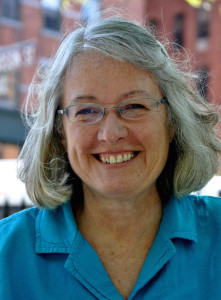 So, how many people have you killed?
So, how many people have you killed?
I mean, characters.
And how long have you been doing it?
I have to confess: It was hard for me to kill my first character, but after that it got easier. I actually stopped noticing how many there were or who they were.
I occasionally killed a major character, at the end, but even before I got to the end it was possible for me to kill minor characters as if they were placemats. I even people killed people I wanted readers to love. If it bumped up the plot, I was all for it.
And then I suddenly realized that I had gotten used to killing characters. I was killing them without remorse.
How many, I wondered, had I killed?
Ah. I didn’t want to go back and count. It was like going back and counting calories after an expensive dinner out. Why ruin it?
More than ten? Of course. Hundreds? Possible. Thousands?
Well, actually, even more than that. Like a great many writers these days, I’d killed off a proportion of the planet for an apocalypse that caught my fancy. It was a particularly lovely apocalypse. It would make a wonderful, visual, stunning movie. Not your usual, squishy, guns and guts and screams and hands-smashing-through-glass kind of movie, either. A grand and glorious apocalypse with lots of people dying in a very artistic way.
See? Even now I’m proud of it.
I remember being outraged by how easily Orson Scott Card got Ender to destroy a whole civilization and then absolved him of responsibility. Nope. Own up, Ender! Responsibility exists!
And yet.
And yet, I kill people.
How long will it go on? Will I ever grow tired of it? Will I switch to stories where no one dies; where, in fact, people fall in love and have babies? They could be strange new babies; I could, conceivably, do that.
Because even though I feel no guilt, I feel that I should feel guilt. It somehow isn’t right to say these weren’t really people and I didn’t “really” kill them.
Besides, I’m sure that the idea of killing is not a slippery slope. It isn’t, is it?
Just because I can write about it so easily doesn’t mean I’d ever actually do it, right?
Right?
Bio: Karen Heuler’s stories appear in literary, fantasy, and science fiction magazines regularly. Her 2014 novel, Glorious Plague, was about a strangely beautiful apocalypse, and her second story collection, The Inner City, was chosen as one of the best books of 2013 by Publishers Weekly. She lives in New York City, where murder never happens and rents are extremely low.
May 1, 2015
Guest Post from Luna Linsdsey: Putting the Mind Sciences in Science Fiction
Google’s predictive powers cause this question to answer itself.
Hard science fiction tells stories based on the hardest of hard sciences, particularly on the engineering and technological application of these sciences. If a story doesn’t have space ships, terraforming, anti-grav, robots, or semi-accurate descriptions of planetary orbits and atmospheres, it cannot join the elite ranks of hard SF.Any story which dips overly much into issues of society, culture, or what it means to be human, is often tagged as soft science fiction. Even cyberpunk, a high-tech genre, is usually considered soft, because of its thematic commentary on the fallen state of mankind.
The implication is that hard SF is somehow “better”, just as the hard sciences are “better”. Physics is a hard science. Psychology is not. Psychology is assumed to be flimsy, weak, inaccurate, and easy. “Soft.” Therefore, SF that deals with it is equally easy.
This division seems a little unfair, because to me the “soft” sciences are arguably far more complex than hard sciences. Physics and chemistry picked up the low-hanging fruit of empirical discovery, those aspects of our universe that could easily be discovered by looking through a microscope, telescope, or mass spectrometer. But understanding the interplay of synaptic pathways? That takes advanced tools like fMRIs and scanning electron microscopes, which have only recently been invented.
Your brain is looking very, very closely at a brain.]
All Freud and Jung had in 1900 was instinct and anecdote. So their research consisted of conjecture. Conjecture which has been built upon and advanced greatly since their time.
Access to technology is now blurring the line between soft and hard sciences. Soft SF concepts that used to require a certain amount of hand-waving can now be written about with a foundation in actual research.
It should follow that the line between soft and hard SF should also blur. And in many ways, this process has already occurred.
I remember reading my father’s shelf of classic authors, like Asimov, Heinlein, and Clarke (but also soft science-fictionist Bradbury). My young mind didn’t care that all the characters were cardboard cutouts, barely-human actors there only to convey the ideas. Because for me, the ideas were most important.
But mere ideas, as cool as they are, flicker over the surface of our minds, the frontal lobe of the neocortex. They fail to reach into the occluded recesses of emotion and subconscious. They fail to spark our deeper neurological wiring.
Some golden era stories did dabble in psychology, but they did so at a clinical distance. For example, the classic novel Foundation depicted a science called “psychohistory” – only at arm’s length. Psychohistory dispassionately crunched numbers to predict how people in masses move inevitably towards some end. But these stories weren’t really about the people themselves.
As I grew up, and as SF grew up, readers began to demand real characters. They wanted to see how the technology affected human beings. There was a realization that without people, science was meaningless, and the outer space we sought to explore would simply be an empty, darkened void.
Mainstream fiction has always focused on an exploration of humanity. The golden age of SF set itself apart as a genre by instead exploring ideas about the future. Since then, it has come back around to become a reflection of ourselves via an exploration of the future. The future has become ancillary to the purpose of SF.
A story that doesn’t mean something beyond the idea is not likely to be published. It’s not enough anymore to fire off dopamine in a reader’s neocortex. A story that doesn’t also evoke some emotion or spark some unknown “thing” in the hidden depths of our hearts is unlikely to be noticed.
Psychology and neuroscience has grown up, too. But we’ve never needed it to. Psychology is often discounted as “squishy,” but that’s because the mind itself is squishy. Many of Carl Jung’s insights 100 years ago still apply today. Modern science is simply discovering how the underlying cells and chemicals work to create the behaviors and mental dynamics he and his contemporaries observed.
And we’re discovering more parts of the mind than even Jung’s two-part consciousness vs. unconsciousness model suggested. An engineer or astrophysicist might prefer the simple, predictable mechanics of a one-brain, one-mind model, (hard science!), but to accept that would be in denial of the facts.
Many may be tempted to laugh at the hand-wavy woo of Jung’s “collective unconscious.” But is it really so silly now that we’re learning about how culture spreads and how about “memes” may be thought of as living creatures that reside in our minds and self-replicate to everyone who comes into contact with them?
Getting a bit meta here (because a mind exploring the mind is intrinsically meta), science fiction has always unconsciously acknowledged psychological principles. By way of example, dreams are a common fictional vehicle to represent thematic elements of a character’s past. This is classic Jungian psychology, and as authors and artists, we know the power of symbolic metaphor firsthand.
Yet how often do we address these ideas head-on, with self-awareness, making the reader aware of the processes of her own brain as she’s reading? Wouldn’t such stories act fully in the spirit of science fiction, which has always asked the reader to ponder her place in the universe, to ponder her own relationship to the ideas of the story?
It’s time to consciously embrace the mind sciences in science fiction. It’s our responsibility, because as a society, we will soon begin to feel the impact in our own lives. Science fiction needs to step up and fill its predictive role, both warning us and giving us hope. Warning us of the dangers of advancement, while simultaneously inspiring future engineers in how to apply the discoveries we’re making right now.
Because what could be more disruptive (both constructively and destructively) than a comprehensive understanding of the human mind? I’m not just talking about obvious technologies, like neural implants, but also developments in how we practice the art of existing in fully understood self-awareness. How might we structure society to account for a better understanding of what nature has already given us?
Moreover, in past-SF, we’ve treated the obvious tech (like neural implants) like toaster oven technology (nifty conveniences) ignoring the probable fact that these technologies will change us at our innermost core. Just as social media has transformed how we relate to one another, “upgrading” ourselves will transform what it means to be human.
And though these scenarios are difficult to imagine (because how else can we relate to our fiction except through our current understanding of humanity?), it’s our responsibility to close our eyes and imagine it. We need to grapple with these disruptions via fiction before the changes come.
Here are just a few questions we ought to explore:
As we discover more neurotypes and cease to pathologize them, how will society change?
What if we could all see a live map (fMRI-style) of our minds on our smartphones?
Forget flying cars – how would the world be different if we could end the cycle of abuse, both in homes and in our public institutions? And how can we end those cycles of abuse? (Yes, this is science fiction!)
How can we explore newly discovered aspects of the human brain by telling stories of alien beings that take those aspects to extremes?
As we gain a better understanding of psycho-social manipulation, can we develop technologies (in the form of memes perhaps) that counter it?
Discoveries now tell us that the digestive tract literally is a mind of its own, and that the nerves throughout our bodies may play a much larger role in memory and thinking processes than previously thought. My words in this post may have triggered neurons in your left elbow. This point alone is worth a hundred science fiction stories.
And if that’s not hard SF, I’m not sure what really is.
Bio: Luna Lindsey lives in Bellevue, WA. Her first story (about a hippopotamus) crawled out of her head at age 4. After running out of things to say about hippopotami, she switched to sci-fi, fantasy, and horror. She also became an accidental expert on mind control, autism, computers, and faeries. Her stories have appeared in The Journal of Unlikely Entomology, Penumbra eMag, and Crossed Genres. She tweets like a bird @lunalindsey, intermittently blogs at www.lunalindsey.com, and publishes entire novels and nonfiction tomes at http://amazon.com/author/lunalindsey. Her novel, Emerald City Dreamer, is about faeries in Seattle and the women who hunt them.
#sfwapro
April 20, 2015
Guest Post from Anne Leonard: Writing “Strong Female Characters” in a Patriarchal Secondary World Fantasy
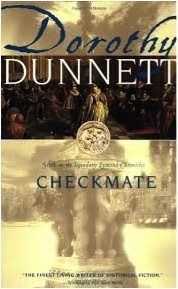 In Dorothy Dunnett’s sixth book, Checkmate, we get this passage:
In Dorothy Dunnett’s sixth book, Checkmate, we get this passage:
She had been led into behaving like a female. And she was being dismissed as a female. But she had charge of his good name, although he might not know it; and she had work to do, although, like a fool she had lost sight of it.
Here we see the character of Philippa Somerville in all her complexity: determined, strong, imperfect, aware of her role in her culture and refusing to be limited by it. Philippa is a prime example of the “strong female character” existing in a patriarchal world, and although the novel is historical rather than fantasy, it and its companions have a lot to teach about writing strong women without giving up the conventions of a patriarchal social structure.
Yes, this is another post about writing “strong female characters.” I am coming to this issue from the position of someone who likes traditional epic fantasy with pseudo-medieval (or at least pre-industrial) cultures. This is my comfort read, and it is what I like to write. This is partly because that was what I grew up on, partly because I’m enough of a romantic to still have a soft spot for heroes, and partly because I like to interrogate that social structure. For me, interesting female characters are the ones who have to face social oppression – the same social oppression I do – and who fight against it within the limitations of their own beliefs about their roles. Feminist fantasy with matriarchal or egalitarian societies isn’t as interesting to me as a writer because it avoids the very problems I want to get my teeth into – what is a woman to do when oppressed? What if she doesn’t know she’s oppressed?
Agency
One of the problems faced by fantasy writers who consider themselves feminist but like to write about secondary worlds based on historically patriarchal cultures is the disconnect between the oppressive culture and the strength of the female characters. This disconnect is why people tend to fall into the assumption that a strong female character has to be a Brienne of Tarth, acting like a man.
That assumption leads to the argument that a strong female character is not historically accurate. Under this logic, because there aren’t lots of historical episodes of women going around acting like epic heroes, there’s no need for a strong female character in epic fantasy. Aside from the silliness of saying fantasy has to be historically accurate, the problem with this argument is that there are lots of different kinds of strong women in history. What makes a woman a strong character is not her physical prowess (though it could be); it’s her agency. The character’s agency is where the clash between oppression and strength is negotiated.
Consider The Handmaid’s Tale; most of Offred’s narrative is describing how she is being subjugated in Gilead and remembering what it was like before. She’s not fighting back or leading a revolution. No one would say she’s not a strong female character, though, because she has voice, feelings, thoughts, memories, and choices. Her agency is internal, in how she responds to the situation in which she is caught. (And if you haven’t read The Handmaid’s Tale, why not? Go read it!) Even if the character accepts the stereotypically gendered roles of her culture, she has to make decisions, and these decisions have to have consequences. This is almost a basic rule of writing, regardless of the character. Something needs to be at stake to move her story forward.
Examples
Some of the best examples of dealing with the disconnect between a patriarchal power structure and a strong female character are historical novels about real women with real power. The Lymond Chronicles (6 books, beginning with The Game of Kings) by Dorothy Dunnett are far and away my favorites.
Set in Scotland, England, France, Turkey, Russia, and some other places during the period between Henry VIII’s death and Elizabeth I’s accession to the crown, Dunnett’s books are amazing for their historical detail, storytelling, intelligence, and characters. In the fourth book, Pawn in Frankincense, Dunnett writes one of the most devastating scenes that I have ever read, leaving George R.R. Martin looking cuddly by comparison. (The books can be read individually, but the reading experience will be much richer taking them in sequence.)
The women’s stories include the growth of Philippa Somerville, a gentleman farmer’s daughter, from child to adult; the consequences of a love affair 30 years past; estrangement between a mother and her son; the unhappiness of a young merchant woman who despise herself and the people around her; and a woman who endures abuse because of her devotion to the cause of an independent Ireland. One woman is a courtesan who has considerable power over powerful men. Several women are queens or courtiers. These books show how women with power wield it (the mother of Mary Queen of Scots is described as having “the thick oils of statesmanship” oozing through her veins), and they also present women who don’t necessarily have political or legal power but have power of personality and rich, complicated lives.
Significantly, the women are not all likeable. (Nor are the male characters, for that matter.) Mary Tudor comes off as rather pathetic, Margaret Douglas is scheming and power-mad, the Dame de Doubtance is a creepy astrologer without a shred of empathy. The younger Philippa is at times frustrating to read because she is absolutist who makes some bad decisions with significant consequences. The strong female character doesn’t have to be the heroine. She doesn’t have to be perfect. But she does have agency, and her choices matter.
These women also aren’t the sixteenth century equivalent of suffragettes or bra-burners. They don’t question the sexual double standard, they don’t don armor and go to battle, they don’t talk about being oppressed or fight overtly against it. (And yes, in one sense it’s kind of absurd to talk about a queen being oppressed – but on the other hand, it’s quite clear that no one is very comfortable with power lying in a woman.) While some of them engage in activities that don’t fit our idea of what women did in the sixteenth century, that’s only a part of them. They are living full and complex lives within the patriarchal society, rather than rebelling. A strong female character can, like Philippa, be aware of being “led into behaving like a female” and put that behind her without questioning her internalized conception of being a female. A strong female character is something feminist readers want, but the character doesn’t have to be a feminist to fit the bill.
Dunnett is not the only writer of historical fiction with strong and interesting female characters. Here are a few recent other books which should satisfy anyone looking for “historical accuracy” in trying to decide what role women should play in epic fantasy:
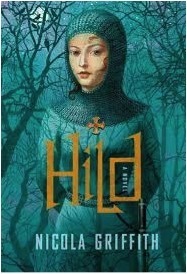 Hild, by Nicola Griffith. This is based upon the life of the woman who became St. Hilda of Whitby. Set in 7th century Britain, the book is thick with historical and physical detail. It presents the life of women who are family of the Anglo-Saxon kings, including slaves and women of lower rank. Hild is a mystic who both does women’s domestic tasks and leads men in battle. She is bisexual; she is listened to by men but is forced into a marriage; she has complicated relationships with the people around her.
Hild, by Nicola Griffith. This is based upon the life of the woman who became St. Hilda of Whitby. Set in 7th century Britain, the book is thick with historical and physical detail. It presents the life of women who are family of the Anglo-Saxon kings, including slaves and women of lower rank. Hild is a mystic who both does women’s domestic tasks and leads men in battle. She is bisexual; she is listened to by men but is forced into a marriage; she has complicated relationships with the people around her.
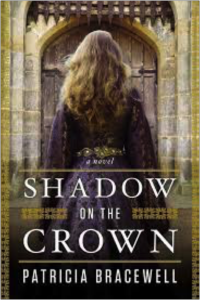 Shadow on the Crown and The Price of Blood, by Patricia Bracewell. These two books are about Emma of Normandy, who in 1002 was married as a teenager to AEthelred the Unready and became a queen of England. In many ways Emma does not have power compared to the men around her, but she fights for what she can get and she uses it. She is a survivor — she was a Queen of England for over 30 years, to two different kings.
Shadow on the Crown and The Price of Blood, by Patricia Bracewell. These two books are about Emma of Normandy, who in 1002 was married as a teenager to AEthelred the Unready and became a queen of England. In many ways Emma does not have power compared to the men around her, but she fights for what she can get and she uses it. She is a survivor — she was a Queen of England for over 30 years, to two different kings.
Theodora – Empress, Actress, Whore and The Purple Shroud, by Stella Duffy. These two books chronicle the life of Theodora from her childhood as a sex slave to her death as the Empress of Byzantium in 548. The title The Purple Shroud refers to a speech made by Theodora which is said to have inspired Justinian to put down a revolt rather than to flee Constantinople. Theodora is an interesting character because of how she rises through the social ranks and because of her forceful personality.
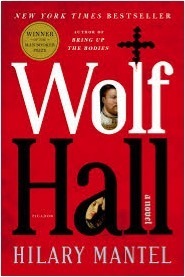 Wolf Hall and Bring Up the Bodies, by Hilary Mantel. Although these books are largely the story of Thomas Cromwell, advisor to Henry VIII, they include as characters Catherine of Aragon, Anne Boleyn, Jane Seymour, and Cromwell’s wife and sister. They depict the ways women interact with powerful men. The relationship between Cromwell and his wife Liz is nicely drawn, and Liz, like Dunnett’s Philippa Somerville, is a good example of a woman on the fringes of political power who has her own agency.
Wolf Hall and Bring Up the Bodies, by Hilary Mantel. Although these books are largely the story of Thomas Cromwell, advisor to Henry VIII, they include as characters Catherine of Aragon, Anne Boleyn, Jane Seymour, and Cromwell’s wife and sister. They depict the ways women interact with powerful men. The relationship between Cromwell and his wife Liz is nicely drawn, and Liz, like Dunnett’s Philippa Somerville, is a good example of a woman on the fringes of political power who has her own agency.
Sharon Kay Penman has written too many historical novels about English royal families for me to list here, but her first, The Sunne in Splendour, is notable for its portrayal of Anne Neville, wife of Richard III, which is almost 180 degrees from Shakespeare’s portrayal of the same. Edward IV’s wife Elizabeth Woodville is also a strong – and unlikeable – character. Penman’s novel When Christ and His Saints Slept is about Matilda of England (Empress Maude) and her war to gain the English crown in the early to mid 12th century.
In sum, the writer of epic fantasy can keep full-blown patriarchal power structures and ideologies as part of the world-building. But history is rife with stories about women in such worlds who also have power, agency, and complex lives. Putting such characters into the epic fantasy world is only going to enrich and deepen it.
Bio: Anne Leonard has been writing fantasy and other fiction since she was fourteen and finally, after a career with as many detours as Odysseus, published her first novel, Moth and Spark, in 2014. She has a lot of letters after her name that are useful when trying to impress someone. She lives in Northern California. Her website is www.anneleonardbooks.com. She can be found on Twitter at @anneleonardauth and on Facebook at https://www.facebook.com/anneleonardbooks.
April 15, 2015
Documents of Tabat: An Auction Handbill
What are the documents of Tabat? In an early version of the book, I had a number of interstitial pieces, each a document produced by the city: playbills, advertisements, guide book entries. They had to be cut but I kept them for web-use. I hope you enjoy this installment, but you’ll have to read Beasts of Tabat to get the full significance. -Cat
A flyer, kept carefully folded, in the top drawer of Bella Kanto’s dresser. Dated some twenty-five years earlier, the paper crumbling and worn, and never looked at since being placed there.
VALUABLE GROUP OF ASSORTED BEASTS AND ANIMALS
Trained by Renowned Beast Trainer Jolietta Kanto, Her Estate
Will Be Sold At Auction
On the 12th Day of Autumn, at the Black Dome
At 2nd Afternoon Bell
***
Two serviceable male Minotaurs, of approximately 25 years, trained in simple guard duties and of proven loyalty and good breeding.
One stout Satyr, capable of gardening and light field work.
One hearty Centaur female, trained in cookery and housekeeping.
One Oracular Pig, of unremarkable accuracy.
Two hands of small hunting dragons of good bloodline and health, with two females currently in brood.
Brace of Riddling Deer, elderly.
One Dog-Man, incapable of breeding but trained for fugitive-hunting.
***
Sold For No Fault; With The Best City Guarantee
Sale Positive And Without Reserve
Terms: CASH
#sfwapro
April 14, 2015
A Glimpse From the College of Mages
In the lull between bells, the campus walks were deserted and their scent trails stale, the pupils all in their classes this late morning. They worked them hard at the College of Mages, and no student would have a break until after a lunch of bread and fishy oil and the moments they could snatch for chatting, flirtation, naps, or mischief, before they were forced to plod on to other debates in other classrooms.
The sunlight was weak in this place, a thin draught of heat unlike the fierce burn of home, particularly in late winter. The Sphinx lay on a stone slab outside the Hall of Instruction, wishing for the comfortable give of sand and listening to the voices from inside: an instructor teaching her first year pupils about the Lists.
The Sphinx combed her hair with a paw. Black strands, dull from infrequent brushing, had fallen in front of her face — discolored claws slid through them, dirt-darkened to a matching color. A fly crawled across her tawny flank, and her limber tail swatted it away as she listened.
“How do we know,” a student asked. “What is Beast and what is Man?”
The instructor’s voice was mild, although she had answered this question before at the lecture’s beginning. “The races that are Human and the races that are Beasts are set forth in the Lists.”
“What if the listmakers were wrong?” a student asked. There was brief, shocked silence at the words before the instructor said “We do not believe that they were wrong.”
The words’ quiet conviction made her hackles rise, the fine fur at the nape of her neck, where it shaded between hair and mane, bristle. Irked and restless, she rose, abandoning her puddle of sunlight to move along the gravel paths of the College, in and out of the pine and cedar shadows.
An itch between the pads of her paws, furry grooves full of sensitive hairs, told her that somewhere in the crypts below the college, Carolus was teaching a class on summoning ghosts. There was electricity and regret in the air, and spiritual energy stirred on the breeze, pulled here and there by forces of attraction and repulsion.
A wiggle of ectoplasm circled her ear, an incipient ghost trying to figure out whether or not it wanted to be born. Another flick of her tufted tail, as big as a fat feast carp, dispelled it back into shredded wisps, and it did not reform as she passed out of range.
She patrolled along the high iron fence that kept the townsfolk out and the students in, intricate ironwork that held containment sigils, woven together so thick and strong that passing through the gates felt like sliding through velvet and steel curtains, heavy weights catching at her. She resisted their impediment to pause outside, surveying the street.
Only one passerby paid her much attention – some northerner newly come to town, country dust still thick on him and his eyes wide with wonder at the city’s nature as it unfolded strange thing after strange thing. Including her, who he eyed with trepidation as he moved along the street. He was a mouse, a boy who would snap beneath one pounce.
She watched him with her wide golden eyes, knowing their unnerving nature. Outside the city, Beasts were more dangerous – her uncanny fellows stalked the humans through the wilderness, and claimed hundreds each year, but she had become Civilized in her role as the doyenne of the College of Mages. She was legendary to the students — generations had tried to evade her detection when sneaking in or out of the grounds. Though she was forbidden to harm them, they acted as though she would. As though she was still dangerous.
Perhaps she was.
#sfwapro


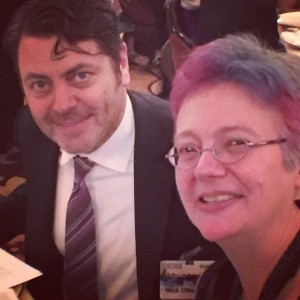

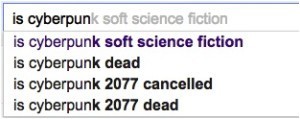
![Your brain is looking very, very closely at a brain.]](https://i.gr-assets.com/images/S/compressed.photo.goodreads.com/hostedimages/1430583883i/14730695.jpg)
